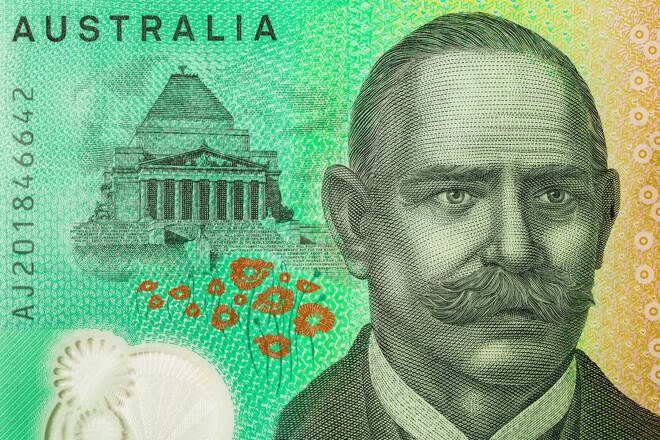Advertisement
Advertisement
AUD to USD Forecast: RBA Stability Review vs. Fed Chatter – What’s Next?
By:
Key Points:
- The AUD/USD declined by 0.25% on Thursday, ending the session at $0.65698.
- US economic indicators overshadowed a hotter-than-expected Australian employment report, leaving the AUD/USD in the red.
- On Friday, the RBA Financial Stability Review and Fed chatter warrant investor attention.
Thursday Overview of the AUD/USD
The AUD/USD declined by 0.25% on Thursday. Partially reversing a 0.83% rally from Wednesday, the Australian dollar ended the session at $0.65698. The Australian dollar rose to a high of $0.66345 before falling to a low of $0.65610.
RBA Financial Stability Review in the Spotlight
The RBA and the Australian economy will be in the spotlight on Friday. On Tuesday, the RBA left the cash rate at 4.35% and toned down the threats of further rate hikes. Nonetheless, the RBA emphasized a willingness to do more to tame inflation.
The impact of inflation and interest rates on households remained a concern for the RBA, creating an uncertain economic outlook.
Views on household vulnerability to the inflation and interest rate environment need consideration. An improving outlook could leave the markets to consider an RBA rate hike if inflationary pressures build. Australian labor market conditions improved markedly in February, which could fuel consumer spending and demand-driven inflation.
US Economic Calendar: Fed Speakers in the Spotlight
Fed Chair President Jerome Powell will be in the spotlight again on Friday. As the dust settles from the Wednesday press conference, Powell will give opening remarks at a Fed Listens event.
Powell and FOMC members will give their views on the current macroeconomic environment. Notably, FOMC members Philip Jefferson and Michelle Bowman will moderate the event.
Fed Chair Powell will unlikely deviate from the Wednesday script. However, FOMC members Jefferson and Bowman could give alternative perspectives.
Recent US economic indicators, including manufacturing and services data, supported expectations of a soft landing. Differing views on the economy and the outlook could influence investor sentiment toward the Fed rate path. Moreover, investors must consider references to inflation and the timeline for a Fed rate cut.
Later in the US session, FOMC member Michael Barr will also be speaking. However, there are no stats from the US to consider.
Short-Term Forecast
Near-term AUD/USD trends will hinge on central bank forward guidance and the macroeconomic environment. A more robust US economy could tilt monetary policy divergence toward the US dollar. While the RBA remains willing to hike rates, the Australian economic outlook remains uncertain.
AUD/USD Price Action
Daily Chart
The AUD/USD hovered above the 50-day EMA while sitting below the 200-day EMA, sending bullish near-term but bearish longer-term price signals.
An Aussie dollar break above the $0.65760 resistance level and 200-day EMA would support a move to the $0.66500 handle. An AUD/USD return to the $0.66500 handle would bring the $0.67003 resistance level into view.
The RBA Financial Stability Review and the Fed warrant investor attention.
Conversely, an AUD/USD break below the 50-day EMA could give the bears a run at the $0.64582 support level.
Considering the RSI indicator, a 14-period Daily RSI reading of 50.85 suggests an AUD/USD return to the $0.67003 resistance level before entering overbought territory.
About the Author
Bob Masonauthor
With over 28 years of experience in the financial industry, Bob has worked with various global rating agencies and multinational banks. Currently he is covering currencies, commodities, alternative asset classes and global equities, focusing mostly on European and Asian markets.
Did you find this article useful?
Latest news and analysis
Advertisement
